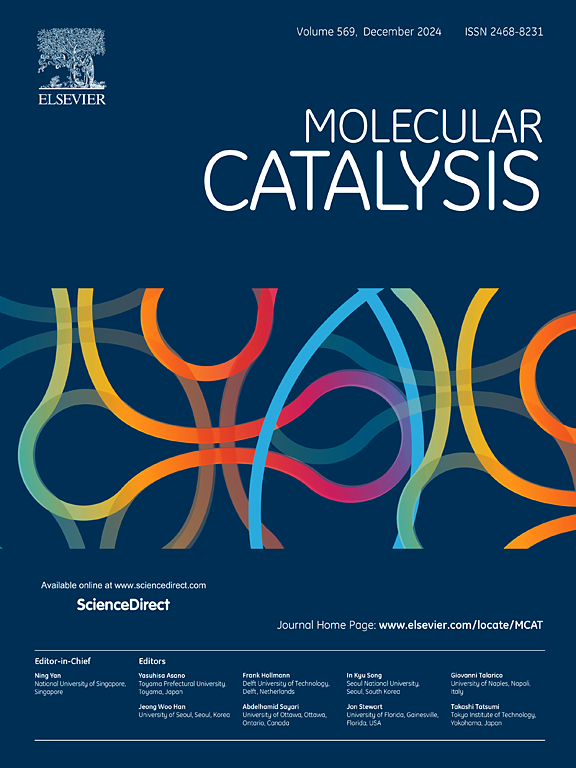One-pot synthesis of heterostructures based on S-doped polymeric carbon nitride and carbon dots for enhancing photocatalytic H2 production
IF 3.9
2区 化学
Q2 CHEMISTRY, PHYSICAL
引用次数: 0
Abstract
Polymeric carbon nitride (PCN) is a promising metal-free visible-light-driven material for solar hydrogen production because of its photocatalytic response to visible light and easy fabrication. However, its photocatalytic activity is limited due to low absorption in a wide solar spectrum, poor charge separation efficiency, and low charge carrier mobility. Herein, we present a strategy to address these issues by combining sulfur-doped PCN (SPCN) with carbon dots (CDs). To this end, we developed a straightforward synthetic procedure based on the calcination of thiourea and small amounts of citric acid. The presence of citric acid in the reaction medium led to the formation of carbon dots (CD) on the surface of the semiconductor material, enhancing light absorption and improving the photocatalytic production of H2. Different amounts of citric acid were used to explore the influence of the CDs on the hydrogen production of SPCN. The obtained materials were thermally exfoliated to increase the surface area and then characterized using XRD, FT-IR, DRS, SEM, and BET. The optimal SPCN![]() CD heterostructure, obtained with 60 mg of citric acid, exhibited improved H2 production activity of 1756 μmol g−1 h−1 of H2 over six hours when irradiated with a solar simulator due to a narrower band gap. Our study provides valuable insights for designing metal-free heterostructures for photocatalysis applications.
CD heterostructure, obtained with 60 mg of citric acid, exhibited improved H2 production activity of 1756 μmol g−1 h−1 of H2 over six hours when irradiated with a solar simulator due to a narrower band gap. Our study provides valuable insights for designing metal-free heterostructures for photocatalysis applications.

求助全文
约1分钟内获得全文
求助全文
来源期刊

Molecular Catalysis
Chemical Engineering-Process Chemistry and Technology
CiteScore
6.90
自引率
10.90%
发文量
700
审稿时长
40 days
期刊介绍:
Molecular Catalysis publishes full papers that are original, rigorous, and scholarly contributions examining the molecular and atomic aspects of catalytic activation and reaction mechanisms. The fields covered are:
Heterogeneous catalysis including immobilized molecular catalysts
Homogeneous catalysis including organocatalysis, organometallic catalysis and biocatalysis
Photo- and electrochemistry
Theoretical aspects of catalysis analyzed by computational methods
 求助内容:
求助内容: 应助结果提醒方式:
应助结果提醒方式:


